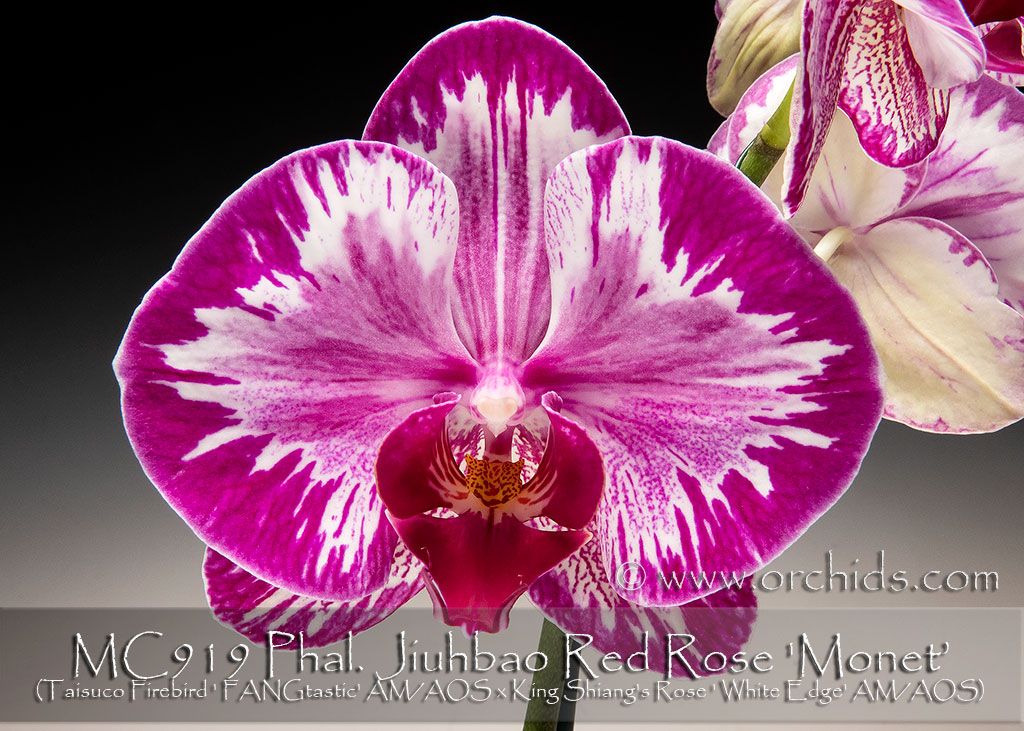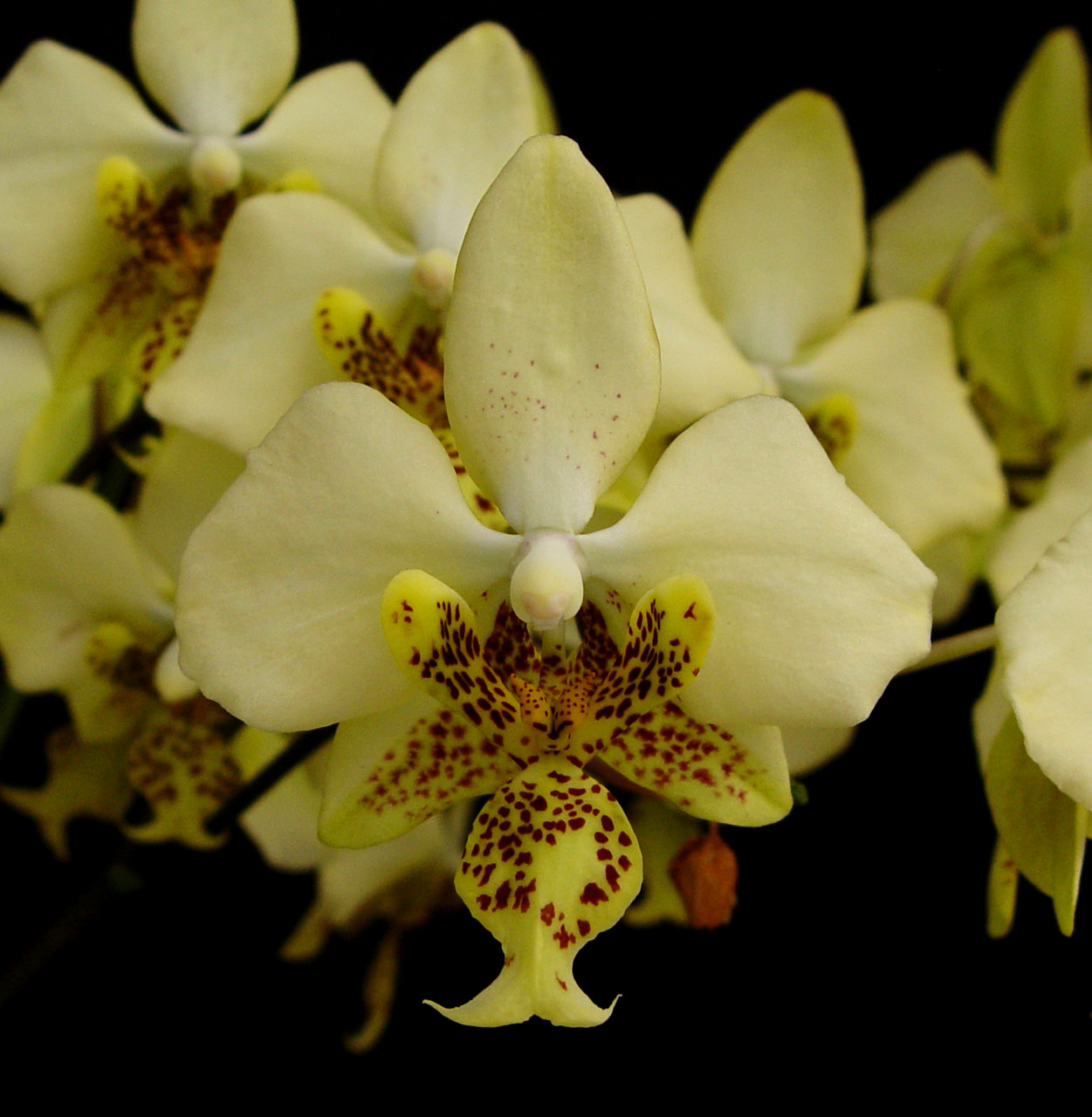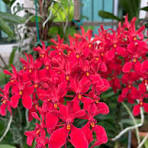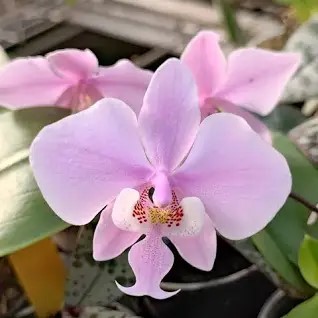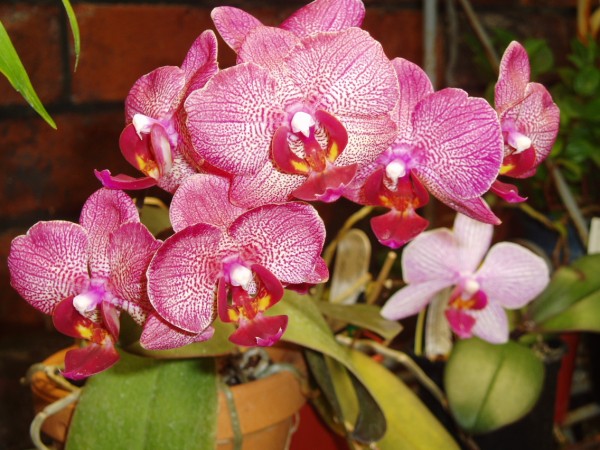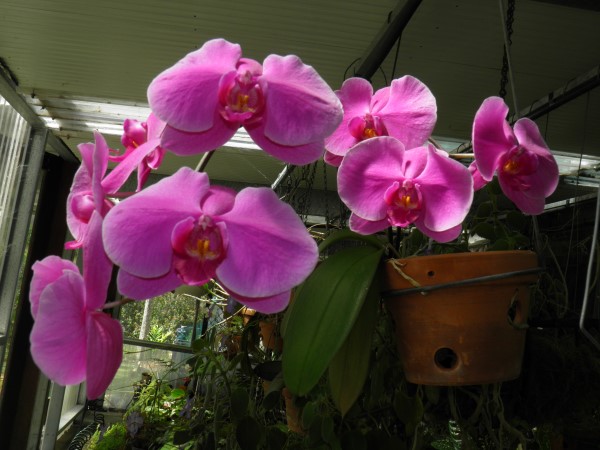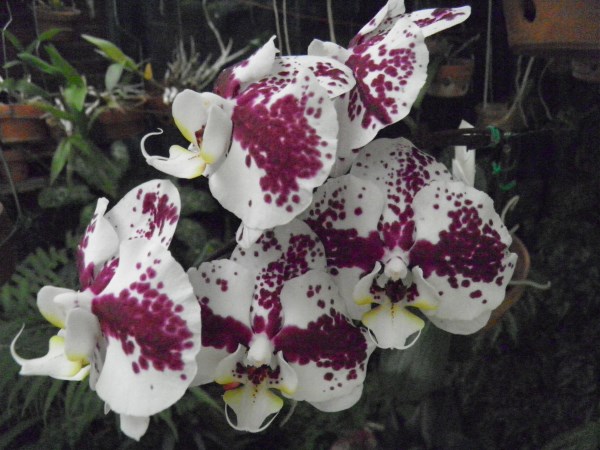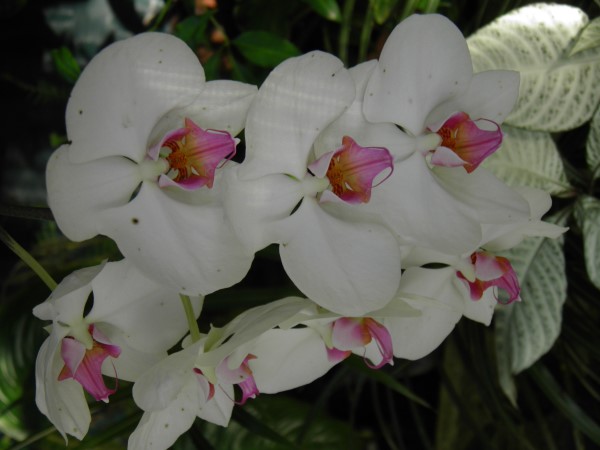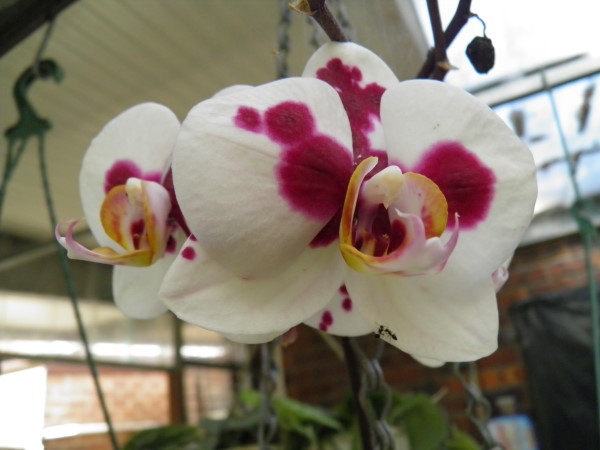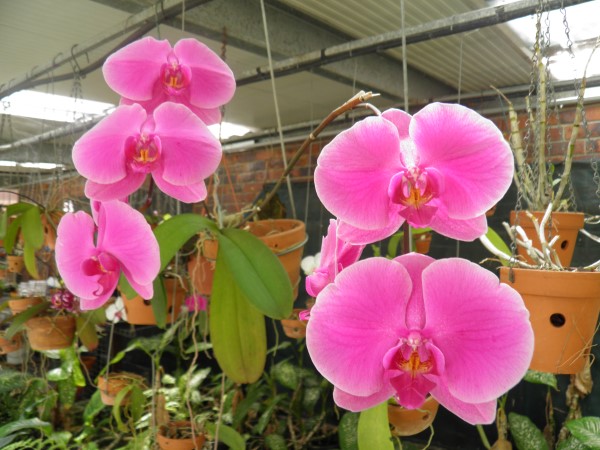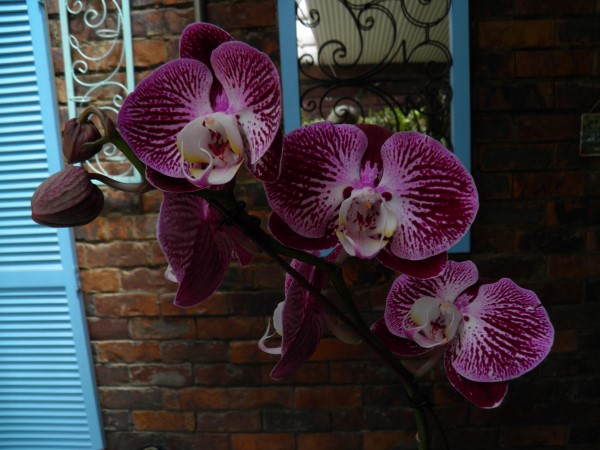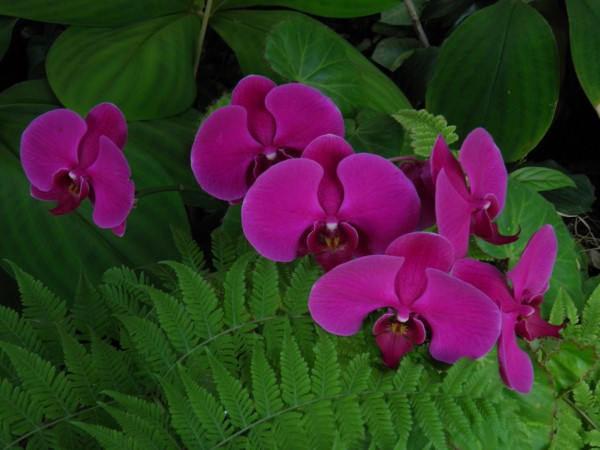


Return to Orchid Growing
PHALAENOPSIS
GROWING HINTS
GROWING HINTS
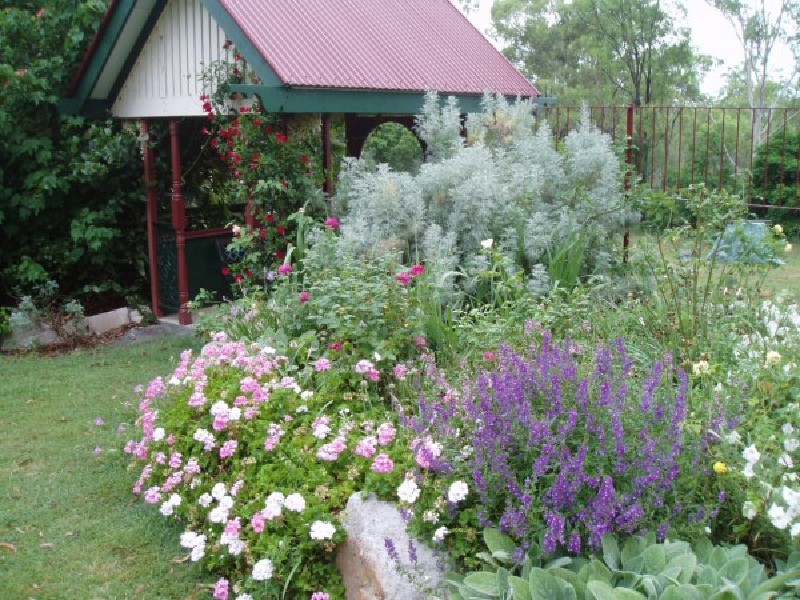
PHALAENOPSIS
Phalaenopsis are also called 'Moth Orchids' and are very popular as gifts. They come from Asia, usually above 300 metres in rainforests, high up on the trees. I have seen them as house plants all over the world from the very cold although most are tropical.
§They have short stout stems enveloped by imbricate leaf bases carrying fleshy, elliptic, oblong-ellptic, to oblanceolate, obtuse, dark green leaves.
§They do not have pseudo bulbs like a lot of orchids but have thick leathery leaves. These leaves indicate the health of the plant. They should be plump and have a shine to them. If they are dull and crinkled it means the plant is not in good health.
§Phalaenopsis are often sold in sphagnum moss and this is often always moist. Like all orchids Phalaenopsis like to be wet and then dry before being wet again. Sphagnum moss holds 5 times its weight in water, so it is not a good medium for orchids. Repot the Phalaenopsis as soon as you can, taking out of the sphagnum moss and potting as below.
§They like constant humidity and do not like cold winters and must have temperatures above 10 degrees celsius. They love air movement, particularly around their roots.
§They are best grown in terracotta pots that are hung to allow good air movement
§Phalaenopsis do not like full sun but they do need good light to flower well.
§ The plant will often 'lean over' and this is because they do not like water staying in the axis of their leaves.
§Their root system is very adventurous therefore no medium need be used. When they are small large orchid bark can be used or whole corks from wine bottles. (real cork)
§Flower spikes will emerge from the axils of the leaves during autumn and spring when the nights are cool and the days are warm.
§Because they do not have pseudo bulbs they need constant moisture during the warmer months, so misting them once or twice a day is important. In winter misting once or twice a week is enough.
§Phalaenopsis love humidity, so growing near water or damping down around them is important. Hanging tillandsia usneoides (spanish moss) around them helps create humidity.
§When misting them, do not mist the flowers as they can get a fungus
§The flowers are produced on racemes or spikes which originate from the main stems.
Potting
·Is best done between September and March, to one size bigger pot
Propagation
·They are propagated by keikies or some develop a second stem off the main base.
·They can develop keikies off old flowering stems (which is why you should never remove old flower stems that are still green). These keikies can be removed once they have attained a good size and have aerial roots. They can then be potted as above
·Keikies are best pulled gently off. Do not remove the flower stem if it is green as it can re-flower or produce more keikies.
Pests
·Mealy bug can get into the axis of the leaves. This is usually because the plant is too dry. Mealy bug is best removed with a cotton bud dipped in methylated spirits.
§They have short stout stems enveloped by imbricate leaf bases carrying fleshy, elliptic, oblong-ellptic, to oblanceolate, obtuse, dark green leaves.
§They do not have pseudo bulbs like a lot of orchids but have thick leathery leaves. These leaves indicate the health of the plant. They should be plump and have a shine to them. If they are dull and crinkled it means the plant is not in good health.
§Phalaenopsis are often sold in sphagnum moss and this is often always moist. Like all orchids Phalaenopsis like to be wet and then dry before being wet again. Sphagnum moss holds 5 times its weight in water, so it is not a good medium for orchids. Repot the Phalaenopsis as soon as you can, taking out of the sphagnum moss and potting as below.
§They like constant humidity and do not like cold winters and must have temperatures above 10 degrees celsius. They love air movement, particularly around their roots.
§They are best grown in terracotta pots that are hung to allow good air movement
§Phalaenopsis do not like full sun but they do need good light to flower well.
§ The plant will often 'lean over' and this is because they do not like water staying in the axis of their leaves.
§Their root system is very adventurous therefore no medium need be used. When they are small large orchid bark can be used or whole corks from wine bottles. (real cork)
§Flower spikes will emerge from the axils of the leaves during autumn and spring when the nights are cool and the days are warm.
§Because they do not have pseudo bulbs they need constant moisture during the warmer months, so misting them once or twice a day is important. In winter misting once or twice a week is enough.
§Phalaenopsis love humidity, so growing near water or damping down around them is important. Hanging tillandsia usneoides (spanish moss) around them helps create humidity.
§When misting them, do not mist the flowers as they can get a fungus
§The flowers are produced on racemes or spikes which originate from the main stems.
Potting
·Is best done between September and March, to one size bigger pot
Propagation
·They are propagated by keikies or some develop a second stem off the main base.
·They can develop keikies off old flowering stems (which is why you should never remove old flower stems that are still green). These keikies can be removed once they have attained a good size and have aerial roots. They can then be potted as above
·Keikies are best pulled gently off. Do not remove the flower stem if it is green as it can re-flower or produce more keikies.
Pests
·Mealy bug can get into the axis of the leaves. This is usually because the plant is too dry. Mealy bug is best removed with a cotton bud dipped in methylated spirits.
Let nature be your guide






















